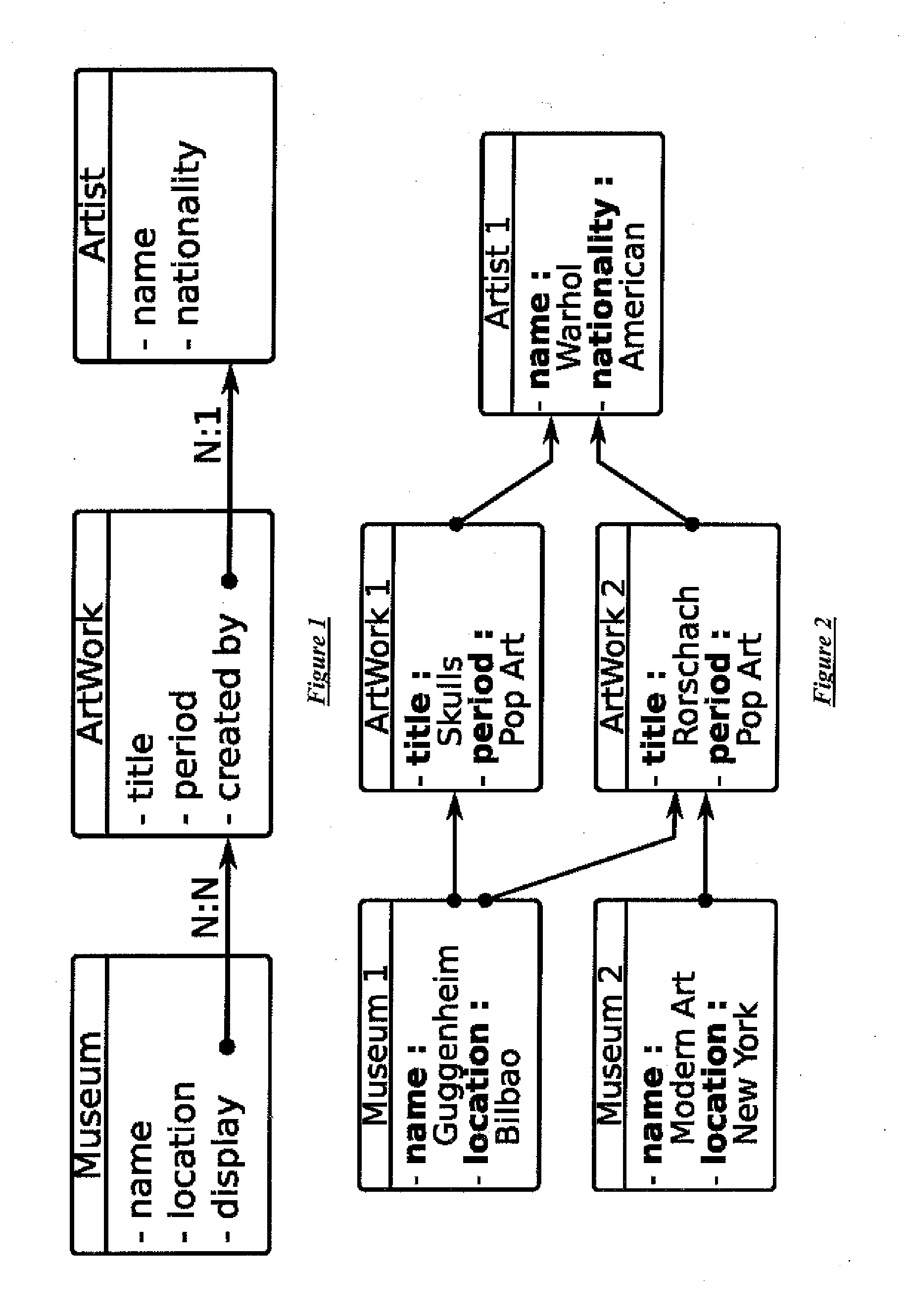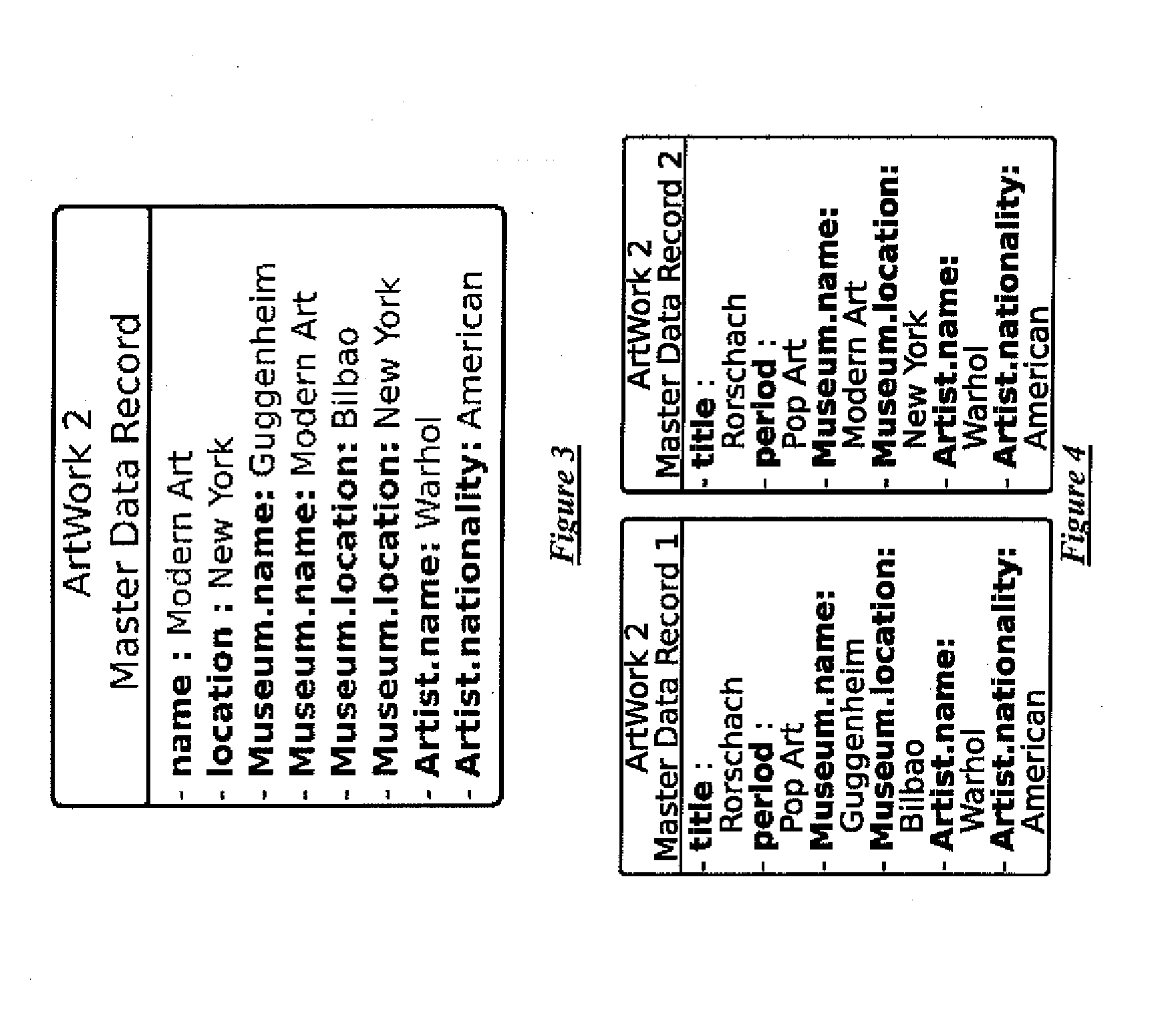Method and system for navigating complex data sets
a data set and data technology, applied in the field of systems and methods for storing, navigating and retrieving information, can solve the problems of increasing the size and complexity of individual data sets, increasing the difficulty of providing users with an intuitive way of being able to navigate these data sets, and increasing the difficulty of returning only relevant results relevant to users' queries, etc., to facilitate pivoted faceted browsing of data sets
- Summary
- Abstract
- Description
- Claims
- Application Information
AI Technical Summary
Benefits of technology
Problems solved by technology
Method used
Image
Examples
Embodiment Construction
[0025]One embodiment of the invention comprises a method of generating, on a computer-readable medium, a collection of master data records and an accompanying inverted index from a data set, the data set comprising a plurality of distinct data record collections and at least some of the data records in the distinct data record collections being interrelated by association information, wherein for each master record, the method comprises: selecting a data record from the data set, and designating it the primary record for the chosen master data record; determining all other data records from the data set reachable from the primary record based on the association information, and designating said other data records as secondary records for said master data record; generating one or more tree-based data structures, each comprising one or more nodes, and storing the data from said primary record and said secondary records as nodes in said one or more tree-based data structure; storing s...
PUM
 Login to View More
Login to View More Abstract
Description
Claims
Application Information
 Login to View More
Login to View More - R&D
- Intellectual Property
- Life Sciences
- Materials
- Tech Scout
- Unparalleled Data Quality
- Higher Quality Content
- 60% Fewer Hallucinations
Browse by: Latest US Patents, China's latest patents, Technical Efficacy Thesaurus, Application Domain, Technology Topic, Popular Technical Reports.
© 2025 PatSnap. All rights reserved.Legal|Privacy policy|Modern Slavery Act Transparency Statement|Sitemap|About US| Contact US: help@patsnap.com



